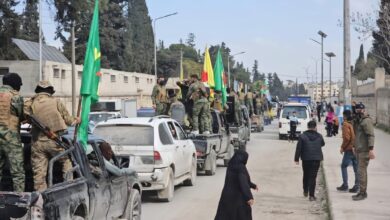
IRANIAN MISSILE SYSTEM SHOT DOWN UKRAINE FLIGHT, PROBABLY BY MISTAKE, SOURCES SAY
Yekiti Media
The Ukrainian flight that crashed just outside the Iranian capital of Tehran was struck by an anti-aircraft missile system, a Pentagon official, a senior U.S. intelligence official and an Iraqi intelligence official told Newsweek.
Ukraine International Airlines Flight 752, a Boeing 737–800 en route from Tehran Imam Khomeini International Airpot to Kyiv’s Boryspil International Airport, stopped transmitting data Tuesday just minutes after takeoff and not long after Iran launched missiles at military bases housing U.S. and allied forces in neighboring Iraq. The aircraft is believed to have been struck by a Russia-built Tor-M1 surface-to-air missile system, known to NATO as Gauntlet, the three officials, who were not authorized to speak publicly on the matter, told Newsweek.
One Pentagon and one U.S. senior intelligence official told Newsweek that the Pentagon’s assessment is that the incident was accidental. Iran’s anti-aircraft were likely active following the country’s missile attack, which came in response to the U.S. killing last week of Revolutionary Guard Quds Force commander Major General Qassem Soleimani, sources said.
U.S. Central Command declined to comment on the matter when contacted by Newsweek. No reply was returned from the National Security Council or State Department.
Of the 176 people on board, 82 were Iranian, 63 were Canadian and 11 were Ukrainian (including nine crewmembers), along with 10 Swedish, seven Afghan and three German nationals. None survived.
The incident was first reported by Iranian semi-official media outlets, which cited the country’s Red Crescent Society as assessing that the initial cause appeared to be mechanical failure. The Ukrainian embassy in Tehran shared this view in a statement, but later retracted it, with Kyiv warning not to draw conclusions from preliminary assessments.
Images began to circulate Wednesday of what appeared to be fragments of a Tor M-1 missile said to have been found in a suburb southwest of Tehran. Ukraine Security Council Secretary Oleksiy Danylov said Thursday in a statement that contact with a Tor M-1 system was among the potential causes for the plane’s destruction that his country was looking into as Ukrainian and Iranian officials met.
Other potential scenarios involved a collision with an unmanned aerial vehicle (UAV) or another flying object, technical malfunction and a terrorist attack.
The Civil Aviation Organization of Iran Chief has also invited Canada and Sweden to cooperate in the accident investigation, however, Chief Executive Ali Abedzadeh has stressed that he would not hand over the aircraft’s black box—which may provide details of the doomed flight’s final moments—to the United States.
Abedzadeh also on Thursday dismissed speculation that a missile strike took down. In a statement, he said this outcome was “scientifically impossible and such rumors make no sense at all.”
In a rare call Thursday, Canadian Foreign Minister Francois-Philippe Champagne spoke with his Iranian counterpart Mohammad Javad Zarif, to whom he “stressed the need for Canadian officials to be quickly granted access to Iran to provide consular services, help with identification of the deceased and take part in the investigation of the crash.”
Champagne said that “Canada and Canadians have many questions which will need to be answered.”
Asked whether the Canadian government is considering or leading with the possibility that an anti-aircraft missile took down Ukraine International Airlines Flight 752, Global Affairs spokesperson Krystyna Dodds said her office would have to get back to Newsweek on the matter.
The Iranian missile strike against Iraqi military positions held by U.S. troops was the latest in a violent series of events involving the two powers. Washington has blamed rocket attacks on Iraqi militias backed by Tehran and responded with deadly border strikes against these fighters, leading to violent protests at the U.S. embassy, an event followed shortly after by Soleimani’s assassination.
The two foes have feuded for four decades but rarely confronted one another directly. The U.S. and Iran’s dispute dates back to the 1979 Islamic Revolution that outed a West-backed monarchy and saw diplomats taken hostage at Washington’s embassy in Tehran for over 14 months.
Their mutual hostility only worsened as the U.S. backed Iraq’s invasion of Iran the following year, a deadly eight-year bout accompanied by so-called “tanker wars” in the Persian Gulf. Shortly before the end of the conflict, the U.S. Navy shot down an Iranian passenger plane, Iran Air Flight 655, killing all 290 onboard in a missile strike also deemed accidental.
The Persian Gulf is crucial for the global flow of oil. Unrest has now returned to the critical region and its waterways in the wake of President Donald Trump’s decision to withdraw from a 2015 nuclear deal that granted Iran sanctions relief in exchange for curbing its nuclear activities. The president opted for de-escalation after the recent Iranian missile attack, expanding sanctions but also calling on the Islamic Republic to give up support for militant groups and to stop seeking a nuclear weapon—something Tehran has always denied wanting.
Newsweek




